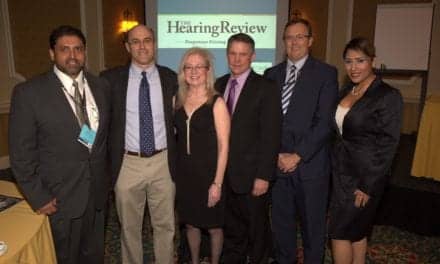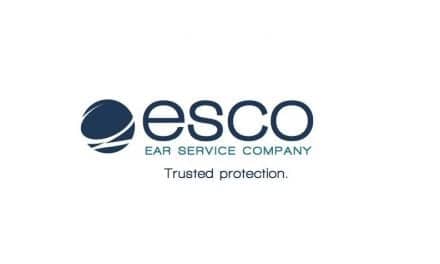Baby Boomers are defined as the generation born between 1945-1964. Numbering more than 75 million, the sheer size of this group warrants attention. Of particular interest is the 21% of the group with hearing loss—nearly 16 million potential patients. What Baby Boomers are looking for is different than what typical seniors look for; what attracts them to your practice is the value they place on technology, service, and convenience.
One of the industry’s greatest opportunities is also one of its greatest challenges: bridging the gap between the traditional senior market and the emerging Baby Boomer market. With this in mind, many practitioners are beginning to reassess their marketplace. They are preparing for the eventual shift in the type of patient that they see, as well as the way in which they treat them.
Marketing to the boomer generation has great appeal for those of us in the hearing health care field. Baby Boomers represent a new generation of people we can help hear well again, and the changing demographics of the hearing care field provide a new opportunity to thrive in a variety of economic climates.
However, this opportunity is also one that will require hard work to cultivate. Neither the industry nor the hearing care profession can afford to wait for boomers to show up at the doorstep. Hearing care professionals, in particular, need to actively market their products and services to them with two objectives in mind: 1) to encourage them to obtain hearing help when they need it, and 2) to help them select your specific office/practice as their provider of choice.
The opportunities are, indeed, large. With more than 75 million boomers, the sheer size of this group warrants our attention. Of particular interest is the 21% of the group with hearing loss—nearly 16 million potential patients.
How big is the challenge? Baby Boomers are defined as the generation born between 1945 and 1964. This wide age range is also one of the factors that makes marketing to them difficult. Unlike their parents, who are sometimes perceived by marketers to be moving through time as one organism, the boomer group comes to your office with significantly greater diversity. They represent a huge range of economic backgrounds, as well as attitudes, buying habits, and ethnicity. It is as vibrant and diverse a market segment as we could ever face.1
Current vs Future Marketplaces
When comparing the senior market with the Baby Boomers, it can be seen that seniors have a more distinct set of values and purchasing habits. These traits have, in fact, driven the current marketing efforts of the hearing industry, as well as the way dispensing professionals do business.
The senior market, often called the “Just Good Enough” generation, largely grew up during the depression and World War II. They tend to be savers, carry little or no credit card debt, and shop but not purchase online. They are often focused on economic indicators as a barometer for their own spending, and they do not tend to spend a great deal of money on themselves. Why they choose particular providers for hearing instruments and why they buy hearing devices are often related to trust, service, and quality.
In catering to the senior group, the best hearing care professionals tend to have very open and service-intensive schedules, and spend a great deal of time with patients at every step of the hearing remediation process; the dispensing process is mostly an ongoing one. As a result, advertising efforts have traditionally had one or more of the following orientations: price, new products, and service.
Baby Boomers, in comparison, have significant differences in the kinds of marketing they respond to. These include a focus on activity and youthfulness, spending on oneself, convenience, cosmetics, and they also have a dramatically different outlook on service and technology. For many hearing care professionals, capturing this group will mean not only changing their marketing and advertising, but also changing the way they do business. Boomers necessitate a different outlook on health care and consumerism, and dispensing professionals need to be aware of this paradigm shift.
Many boomers are working adults who are tremendously active. As part of their lifestyle, they tend to look for products/services that enhance their abilities rather than shore up their weaknesses. Therefore, any marketing directed at this audience should focus on the benefits of amplification that enhance their quality of life and that allow users to do more of the activities they enjoy. This is a clear departure from a traditional message in the hearing care industry, which is that hearing instruments allow people to do what they need to do, or what they used to do (eg, an emphasis on a chronic disability).
Unlike the senior market—which saves and tends not to spend money on itself—boomers tend to spend, accumulate debt, and purchase products on credit or time. For them, value is defined more often by what they receive than on how much they pay. Marketing messages to this segment should shift from price and features to value and expected results from the use of amplification. Inclusive programs like “frequent buyer” clubs and value-added programs also appear to become important calls to action.2
Related to the youthful active lifestyle, convenience and cosmetics take a front seat to price with boomers. Just as they have dramatically increased their amount of spending on plastic surgery, their increased purchase of hearing instruments will revolve around cosmetics, and their provider choice will be made largely based on convenience. Therefore, there will be an increased importance and premium on how patient scheduling is handled in your office and the cosmetics of hearing instruments.3
Boomers also view technology and service differently; they see high technology as a prerequisite. These consumers tend to be well informed, and much of the information they read is gathered online.
Likewise, the service component of the hearing aid experience will take on a different significance. Boomers tend to expect higher levels of service because they are used to being taken care of. In fact, they insist on quality customer service and are just as quick to point out poor service as they are poor quality products. Marketing that appeals to the issues of the best technology delivered in a convenient and service-intensive fashion will take precedence over marketing-based on price and product.
|
Table 1: The Senior vs Baby Boomer Market |
|
| Senior Market | Baby Boomer Market |
| More homogenous Team/family approach Largely retired, less active More resistant to technology Save and bargain Avoid credit Follow advice Price oriented |
Very diverse Individual “me” approach Still working, very active Technologically proficient Bargain and spend Use credit or time-plans Want control of own decisions/care Value oriented |
| For more information on the differences between the various generations, see Peter Mark’s article4 in the March 2000 HR. | |
Marketing to the Baby Boomer
From the preceding discussion, some conclusions can be drawn about marketing to boomers. Our efforts need to reflect factors of technology and performance, convenience, cosmetics, and restoring vitality. We also need to address the cosmetics, convenience, and stigma associated with hearing instruments, as well as how amplification products and professional service can enhance an active lifestyle. The traditional marketing focus on features and new products will not be enough.
Another marketing change that should be addressed is the issue of changing values and ethnicity. How and where people purchase hearing instruments is going to differ, depending on the various segments of the target audience. The demographics of your marketplace are going to be more important than ever in serving a diverse public, and they should play a key role in your marketing planning.2
Finally, the advertising message directed at boomers should reflect youthfulness and active lifestyles—with a heavy emphasis on enhancements to their lifestyle, rather than compensating for their disabilities. The widely used (and mostly successful) marketing approach to seniors that contains the headline, “Do you have a problem hearing?” will be less successful with the boomers.
Marketing to boomers will continue to use traditional media, although successful campaigns will tend to look more like mainstream advertising, with more white space, catch phrases, and youthful images. Baby Boomers are used to the “sound bite” approach to marketing, where the message is delivered in only seconds. Advertising messages may also incorporate value-added packages or frequent buyer clubs, as the price-value relationship changes. These may be used as overlays to the core messages.
The most radical change in marketing hearing care products and services will most likely take place online. Boomers are inexorably linked to the Internet. Hearing care professionals who are positioning themselves to serve boomers will eventually need a strategy for, and presence on, the Web.
Summary
How much time and resources practitioners dedicate to this audience depends as much on the practice and the practitioner as it does on the practice’s demographics. For dispensing professionals whose average patient age has been falling, changes in marketing strategy may not be that radical; they can slowly adapt their marketing strategies to their changing patient base (but they need to be aware that a change is taking place). By contrast, those who work in a community in which the average age continues to rise may have to make more dramatic changes in the way they market their businesses in the future.
Roger McGuire is vice president of professional development for American Hearing Aid Associates (AHAA), West Chester, Pa.
Correspondence can be addressed to HR or to Roger McGuire, American Hearing Associates , 1870 Egan Way, Lake Oswego, OR 97034; email: [email protected].
References
1. Atlantic Information Services. Physician Compensation Report. Washington, DC: AIS; 2001.
2. Dychtwald K. Age Power. New York, NY: Tarcher/Putman; 2000.
3. Mazo E. Editorial. Pittsburgh Post-Gazette. July 6, 1999; Opinion section.
4. Mark P. The swing generation: challenges and opportunities in the new millennium. Hearing Review. 2000;7(3):24-28.




